Rome is about 2800 years old which makes it one of the most ancient and interesting cities in the world. Major historical sights in Rome include the Colosseum, the Pantheon, the Roman Forum, the Vatican City, Trevi Fountain, and many more. Discover the Best 30 Things To Do in Rome to see the most famous sights and landmarks.
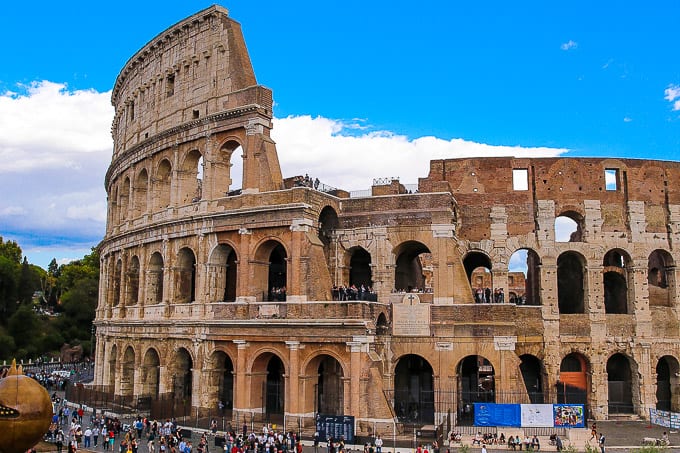
About Rome
- Rome is the capital of Italy. Historically, Rome was the capital of the Roman Kingdom, The Roman Republic, and the Roman Empire.
- Vatican City is an independent country within the city of Rome.
- According to Roman mythology, Rome was founded in 753 BC, which makes the city about 28 centuries old.
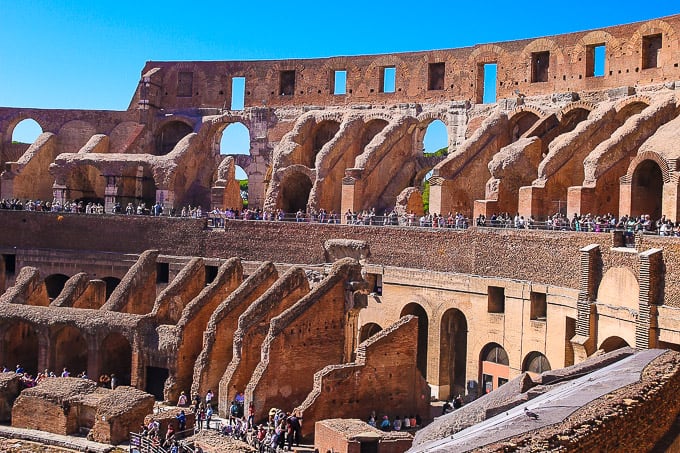
30 Best Things To Do in Rome
Rome’s rich history and artistic legacy make it one of the most influential cities in the world. There are so many historical sights, buildings, and structures to see in Rome, a day or a week or even a month does not seem enough.
Below are 30 major sights and landmarks to see in Rome, including the Colosseum, the Pantheon, the Roman Forum, the Vatican City, the Sistine Chapel, Trevi Fountain, and many more.
1. Colosseum
Colosseum is the largest amphitheater ever built and is one of Rome’s most recognizable landmarks. It’s located in the center of Rome, east of the Roman Forum.
The Colosseum was built in 70-80 AD. The construction began under the Roman Emperor Vespasian and was completed under the Roman Emperor Titus. The Colosseum used to hold an audience of about 60,000 people. The amphitheater was used for gladiator fights, public shows, and re-enactments of famous battles.
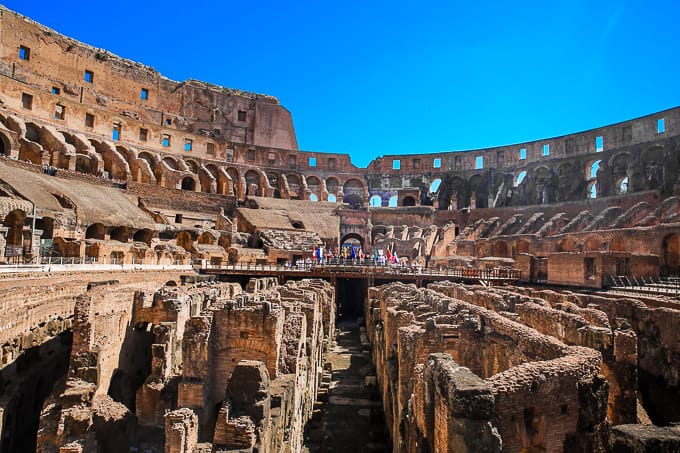
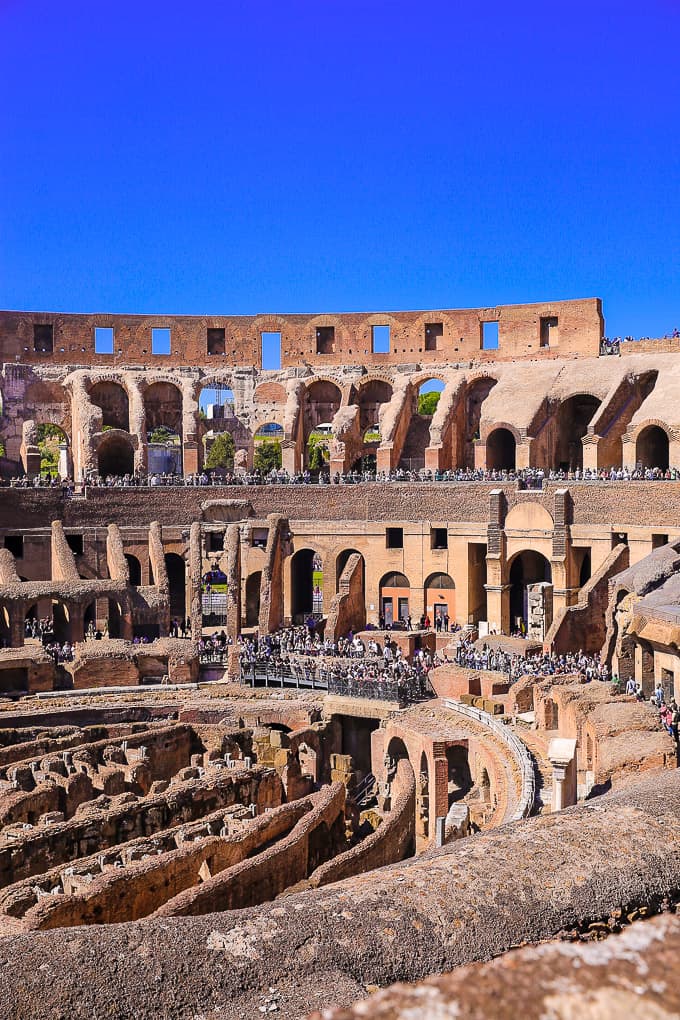
2. Pantheon
Pantheon is a former Roman temple. It dates back to 113–125 AD. It’s one of the best preserved ancient Roman buildings because it’s been in constant use since it was built. Starting from the 7th century, the Pantheon has been used as a church known as Santa Maria Rotonda.
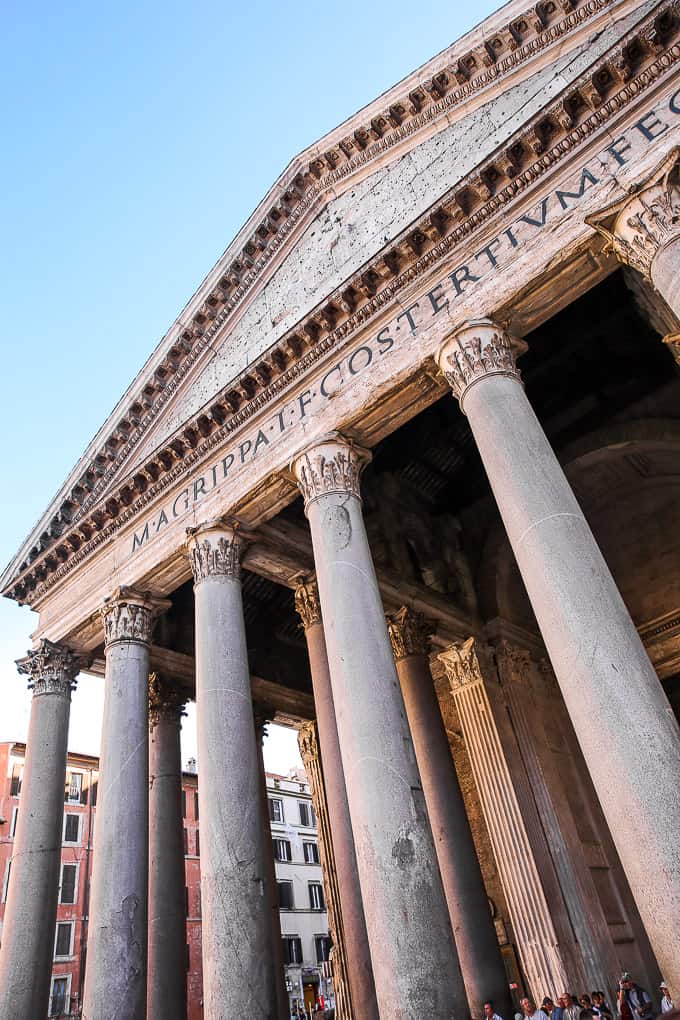
Inside the Pantheon is a large room of rounded shape. There is an oculus (a circular opening) in the center of a dome on top.
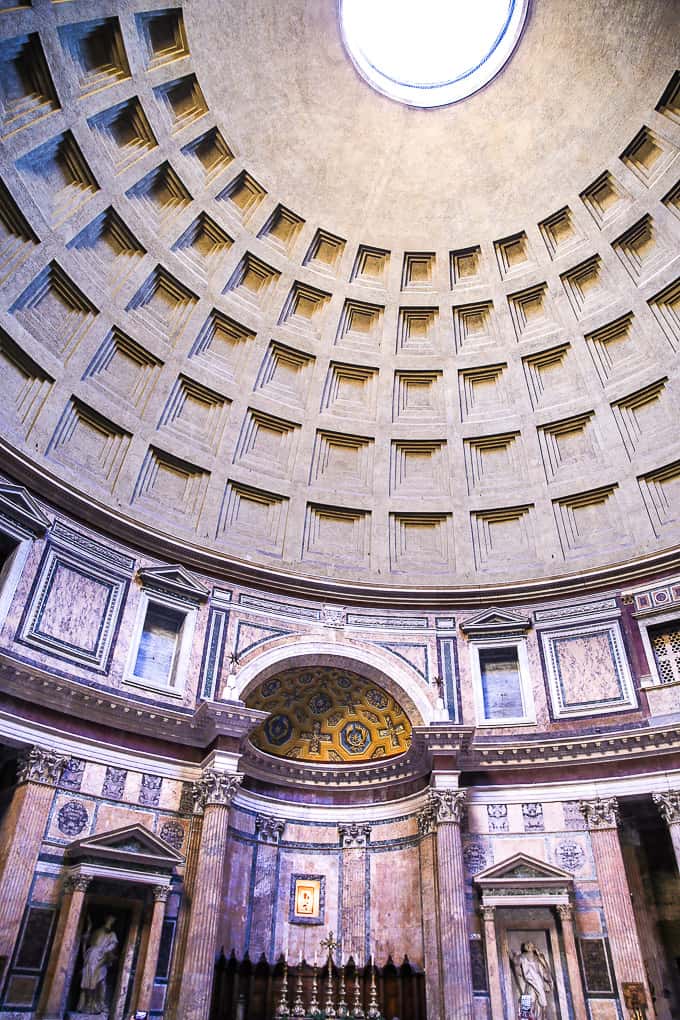
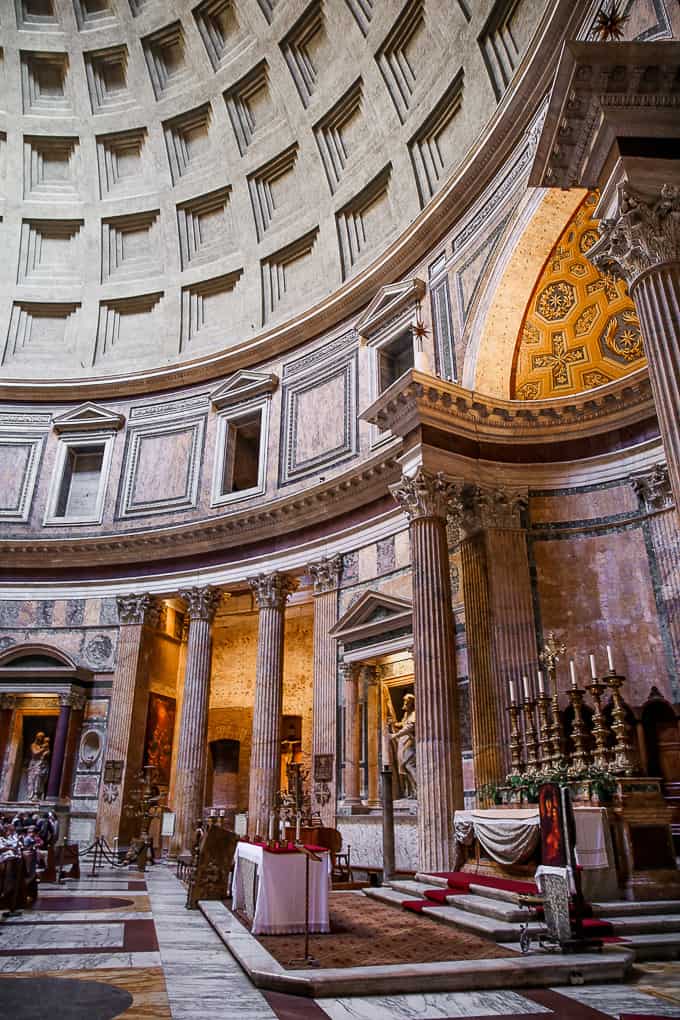
3. Trevi Fountain
Trevi Fountain was designed by an Italian architect Nicola Salvi. The fountain was built in the 18th century. It’s made of stone and stands about 26 meters high. Behind the fountain is the Palazzo Poli.
It’s customary for Rome’s visitors to throw coins into the fountain, and the bottom of the fountain basin is visibly filled with coins. It is estimated that thousands of euros are thrown into the Trevi’s fountain every day. It is illegal to take the coins from the fountain.
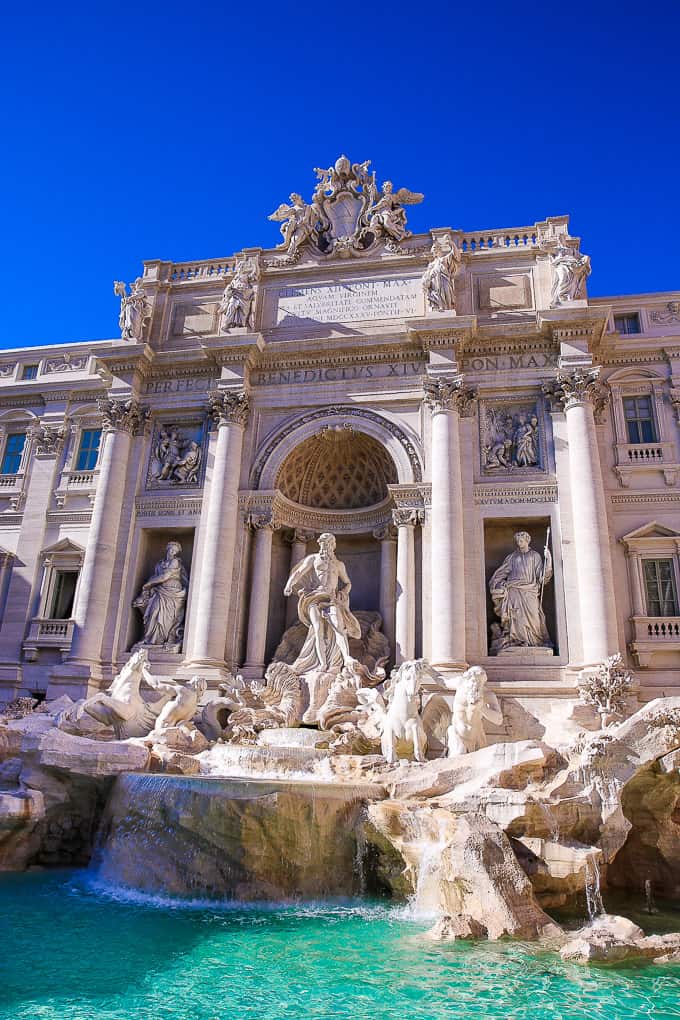
4. Spanish Steps
Spanish Steps is a famous area in Rome consisting of, well, steps! The Spanish Steps connect the Piazza Trinità dei Monti at the top with the Piazza di Spagna at the bottom.
At the bottom of the steps is Piazza di Spagna – a lively and busy square. At the top of the steps is a spectacular Church of the Santissima Trinità dei Monti (a late Renaissance church).
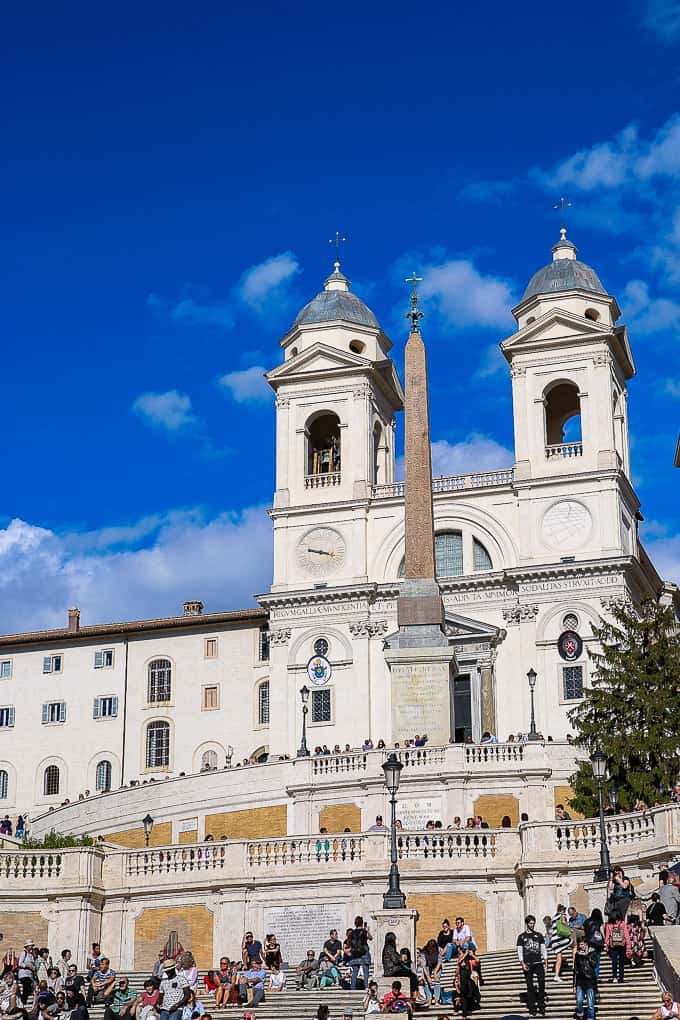
5. The church of the Santissima Trinità dei Monti
The Church of the Santissima Trinità dei Monti is a late Renaissance church at the top of the Spanish Steps. The interesting thing about this church is that it is a responsibility of the French State.
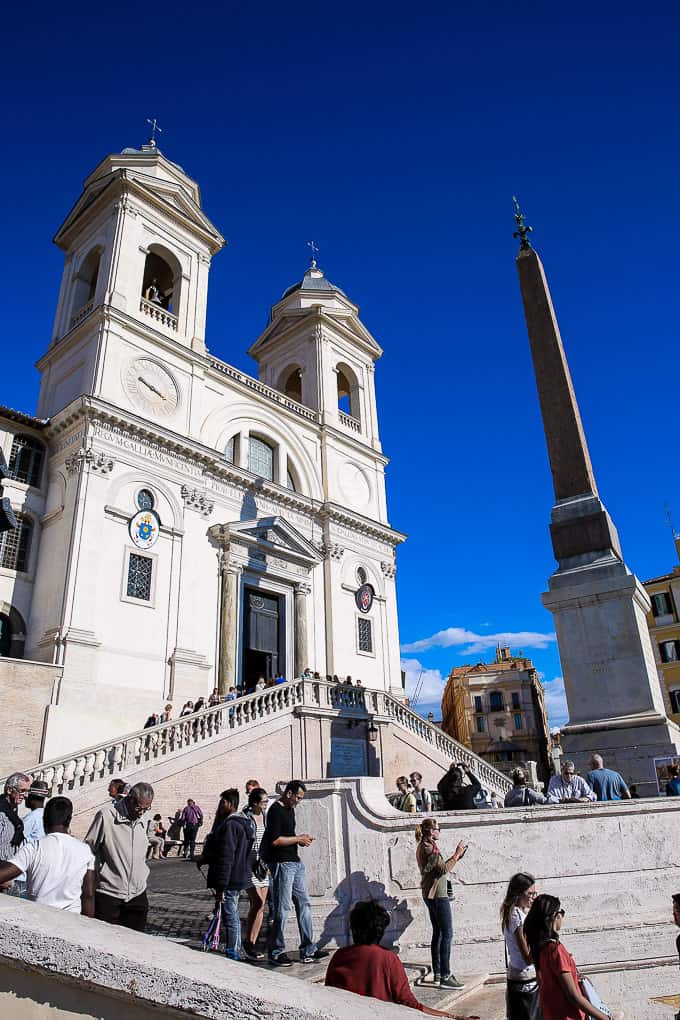
6. Altare della Patria
Altare della Patria is an imposing architectural structure built in the honor of Victor Emmanuel II, the first king of a unified Italy. The structure was designed in 1885 and completed in 1935. It’s situated between the Piazza Venezia and the Capitoline Hill in Rome, Italy.
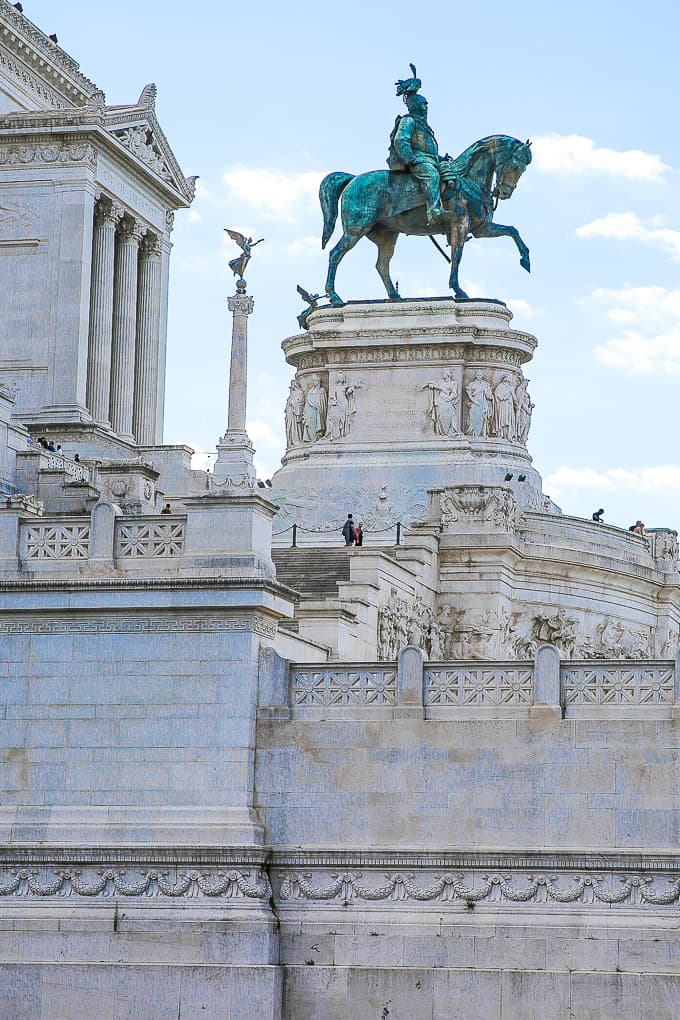
7. Piazza Navona
Piazza Navona is a lively square in Rome, Italy. It’s been a public area since the 15th century when it was the place of the city market. Piazza Navona has several buildings and structures featuring the Baroque style. The main sights in the piazza include the Fountain of the Four Rivers, the 17th-century Baroque church of Sant’Agnese in Agone, and the Palazzo Pamphili.

8. Fountain of the Four Rivers
Fountain of the Four Rivers (also known as Fontana dei Quattro Fiumi) is located in the Piazza Navona in Rome.
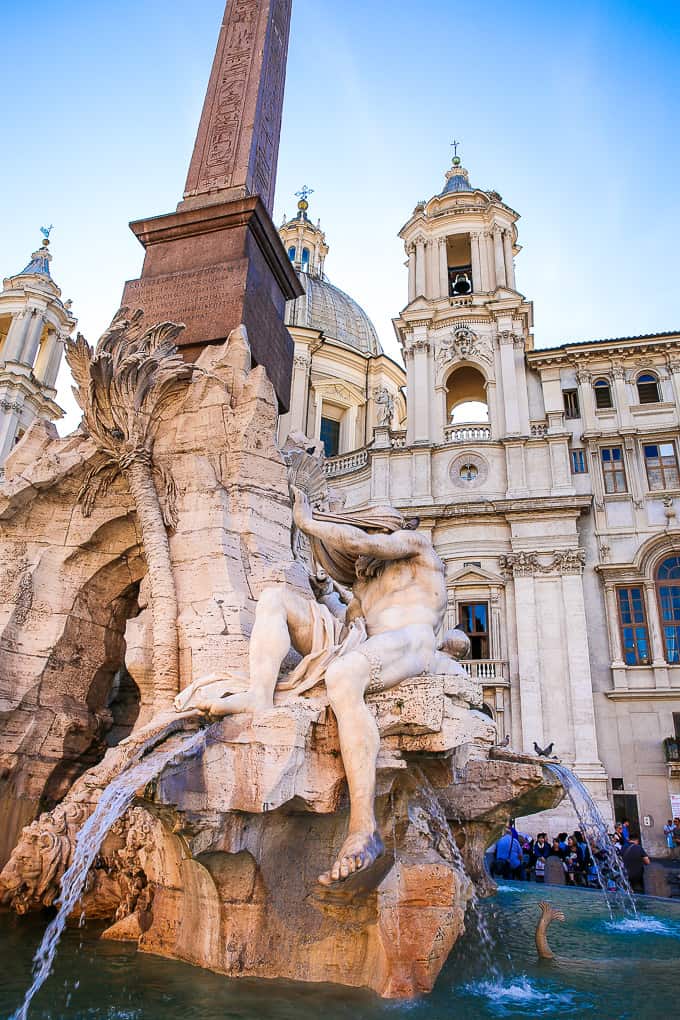
9. Roman Forum
The Roman Forum is the plaza in the center of Rome, containing the ruins of several ancient government buildings of historical importance. During the times of ancient Rome, the forum was a plaza used for public events, such as public speeches, gladiator matches, military processions, etc. It was also the center of commerce and judicial affairs.
One of the most important functions of the forum was the celebration of military processions during the times of the Roman Republic and the Roman Empire.
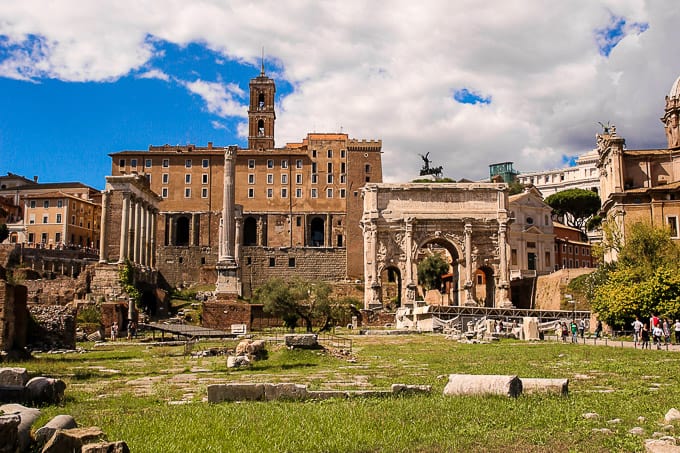
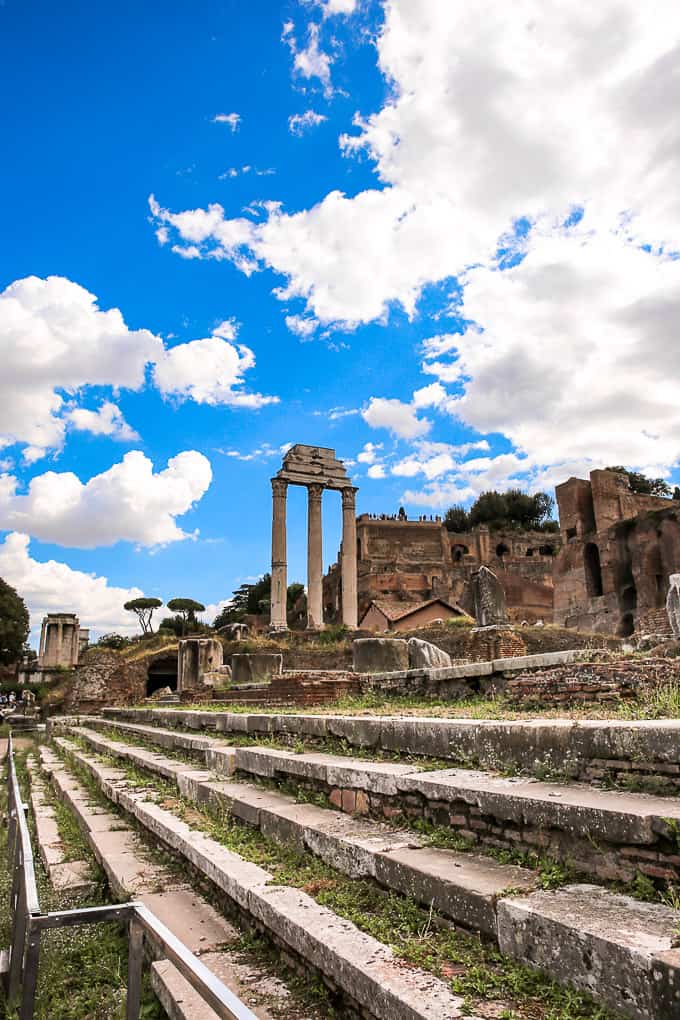
10. The Temple of Castor and Pollux
The Temple of Castor and Pollux is an ancient Roman temple built in 495 BC. It’s located in the Roman Forum.
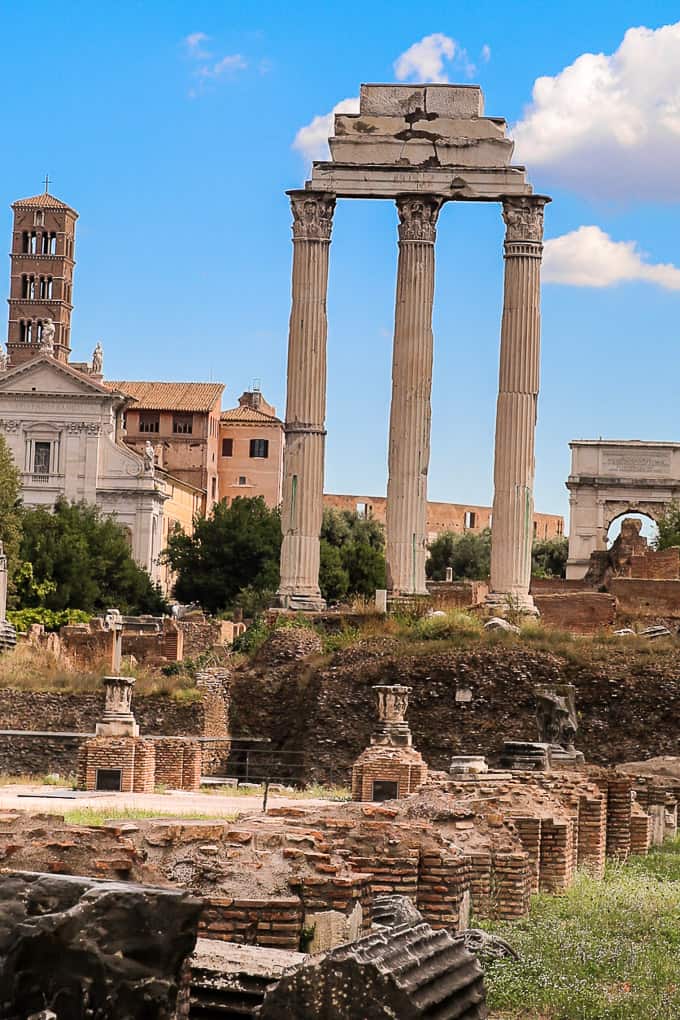
11. The Temple of Saturn
The temple of Saturn was built in 497 BC and is situated in the Roman forum. It’s an ancient Roman temple dedicated to the god Saturn.
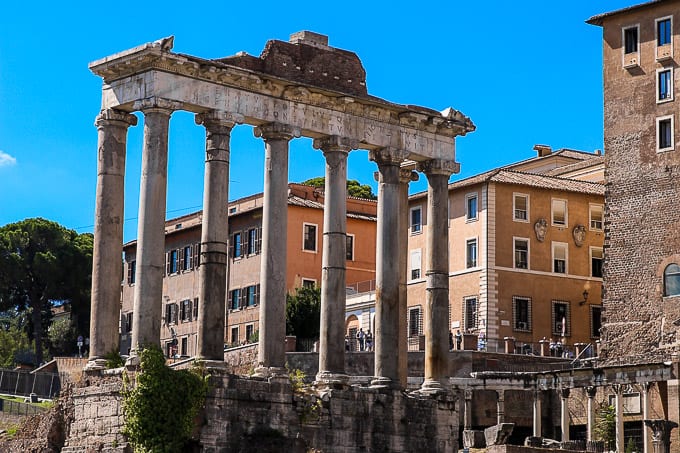
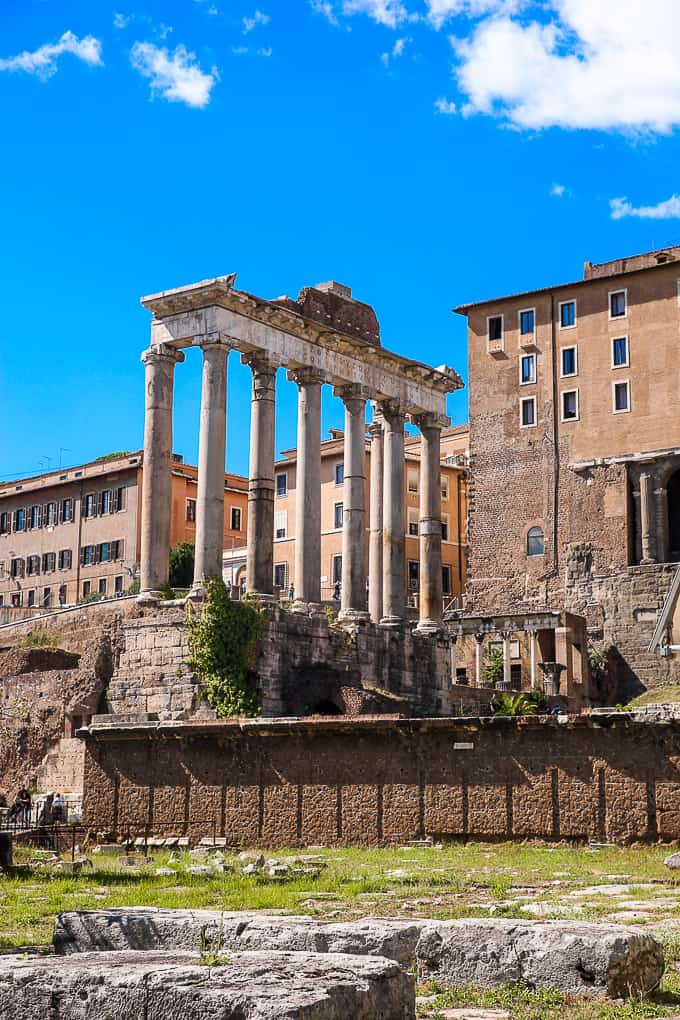
12. The Column of Phocas
The Column of Phocas is located in the Roman Forum. It dates back to the 7th century. The column was dedicated to Phocas, who was the Emperor of the Eastern Roman Empire from 602 to 610.
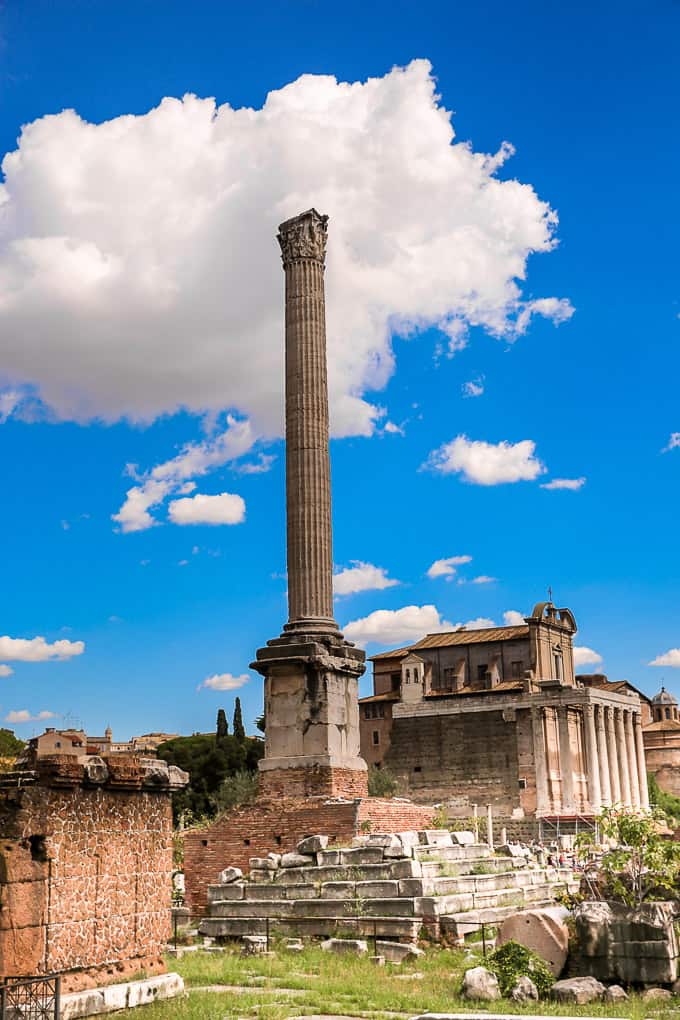
13. The Temple of Antoninus and Faustina
The Temple of Antoninus and Faustina is a Roman temple built in 141 AD. It’s located in the Roman Forum in Rome. The temple is dedicated to the emperor Antoninus and his wife Faustina. Several centuries later, the temple was converted into a Roman Catholic church.
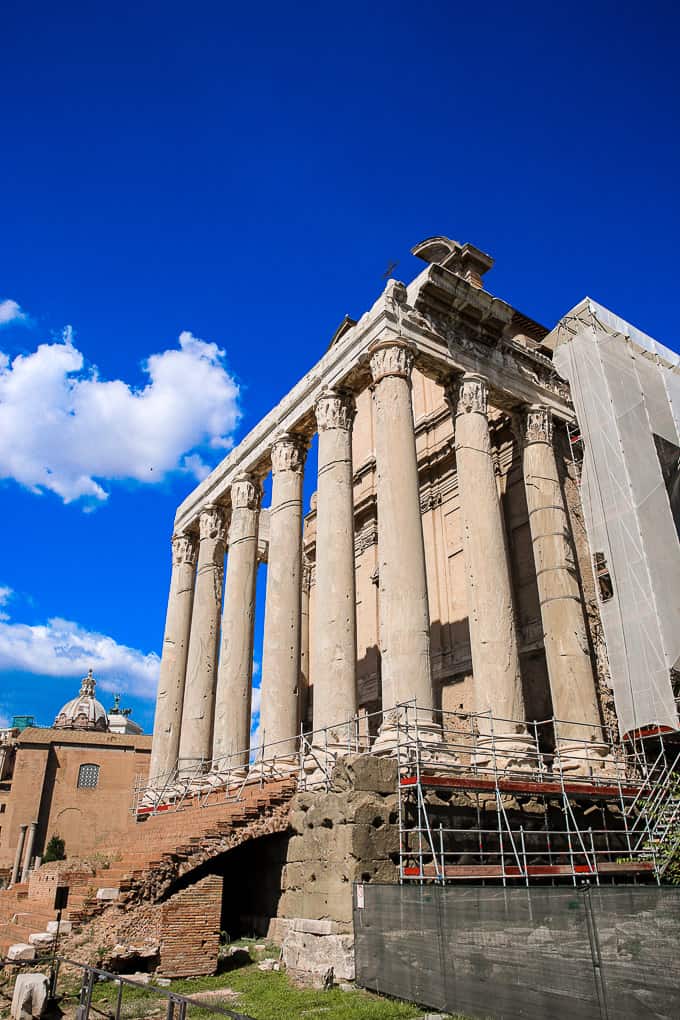
14. The Arch of Septimius Severus
The Arch of Septimius Severus is located in the Roman Forum. It’s a triumphal arch built in white marble in 203 AD. It was dedicated to commemorating the victories of the emperor Septimius Severus and his two sons in the battles against the Parthian Empire (major political power in ancient Iran).
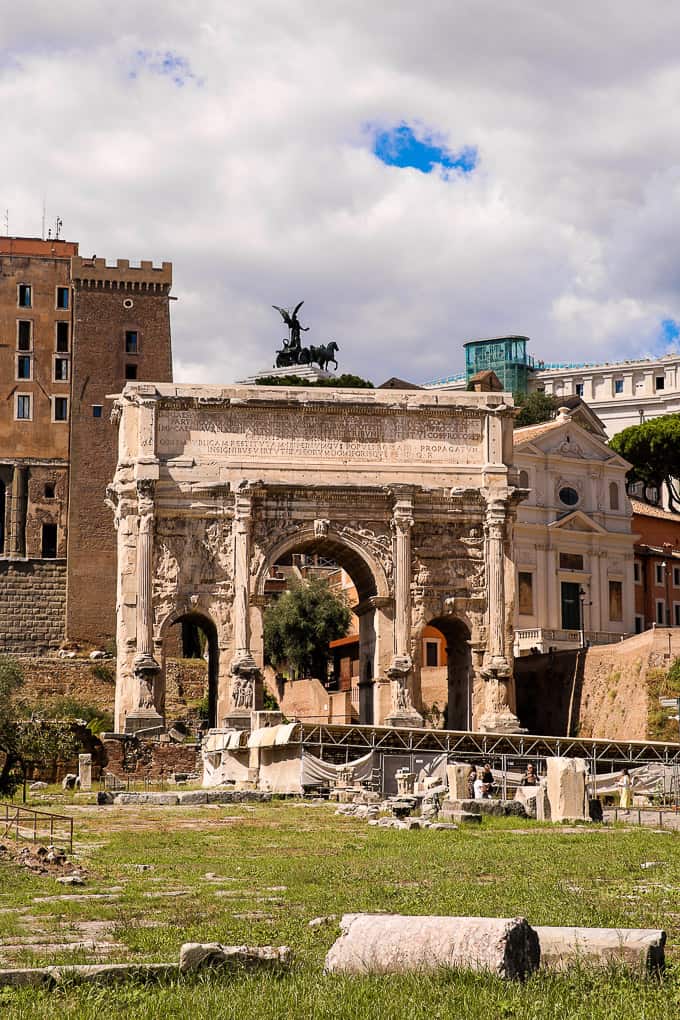
15. The Arch of Constantine
The Arch of Constantine is located between the Colosseum and the Palatine Hill. It’s a triumphal arch commemorating the victory of Constantine the Great over the Roman Emperor Maxentius in 312.
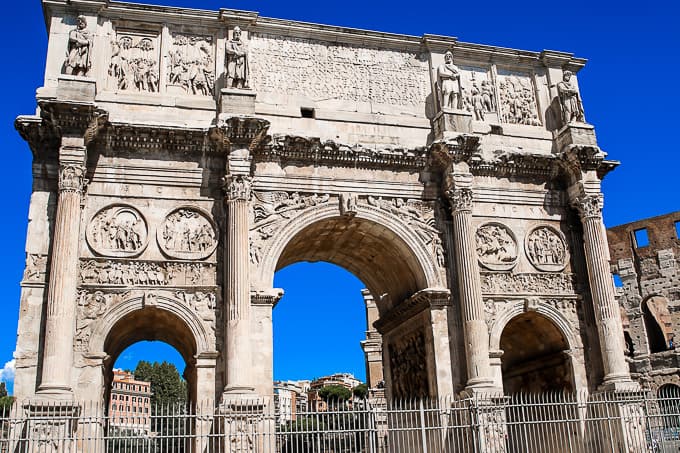
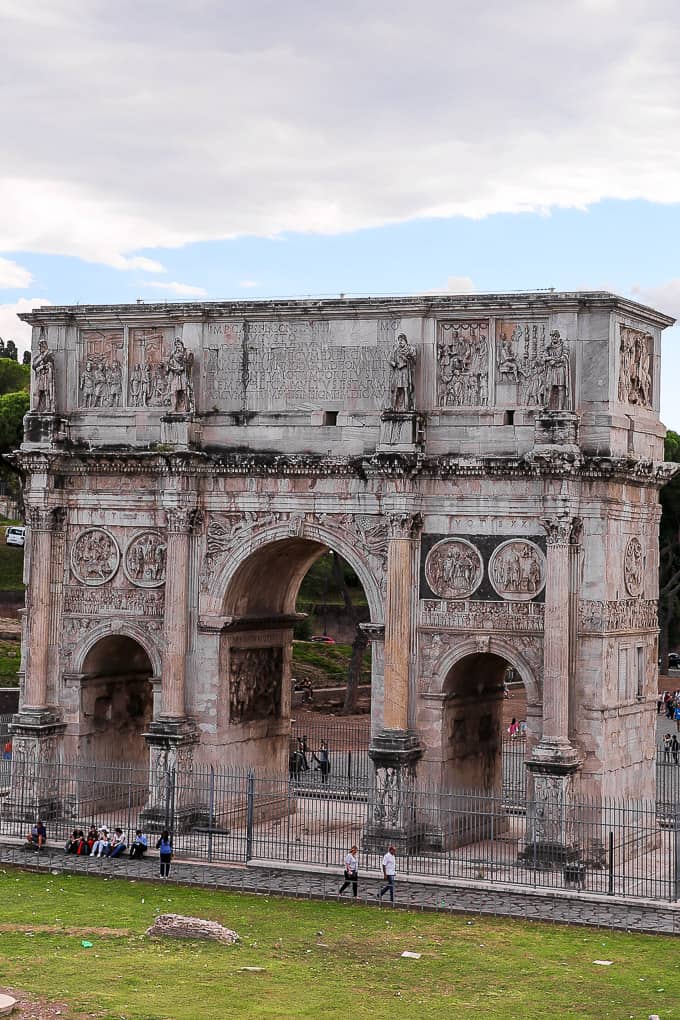
16. The Arch of Titus
The Arch of Titus dates back to the 1st century AD. The arch was built to commemorate the victories of Titus, the brother of the emperor Domitian.
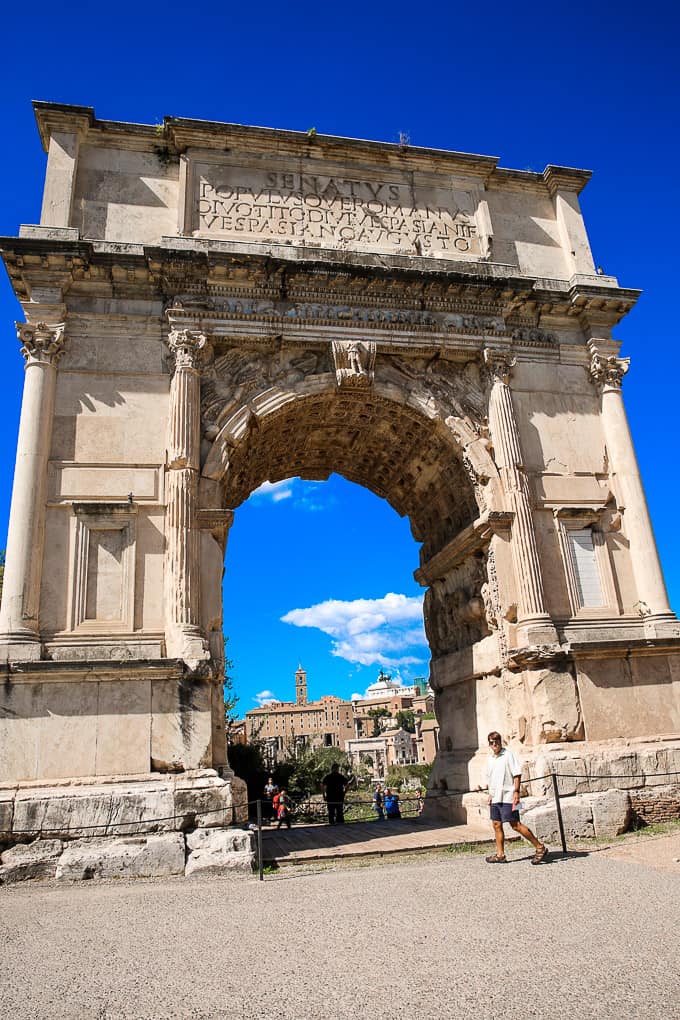
17. Palatine Hill
Palatine Hill is one of the Seven Hills of Rome. It stands above the Roman Forum. Main sights on the Palatine Hill include the Palace of Domitian, the Palatine Stadium, the House of Augustus, etc.
18. Palace of Domitian on the Palatine Hill
Palace of Domitian is located at the top of the Palatine Hill. It was built as an imperial palace for Roman Emperor Domitian. The Palace has been the official residence of the Roman Emperors until the fall of the Western Roman Empire.
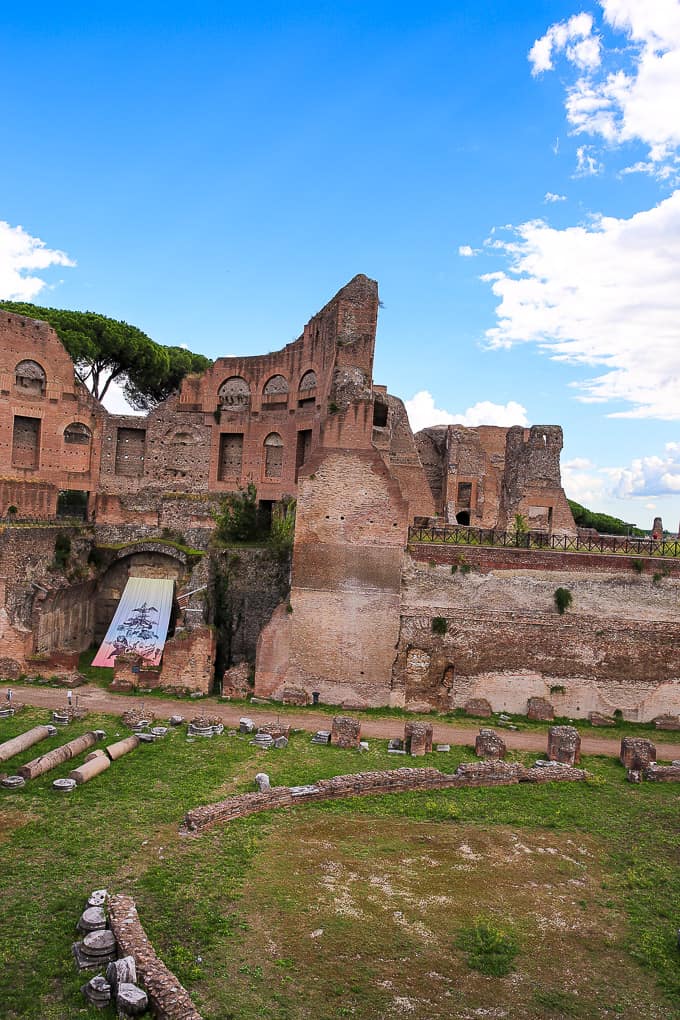
19. Palatine Stadium
The Palatine Stadium was a part of the imperial palace.
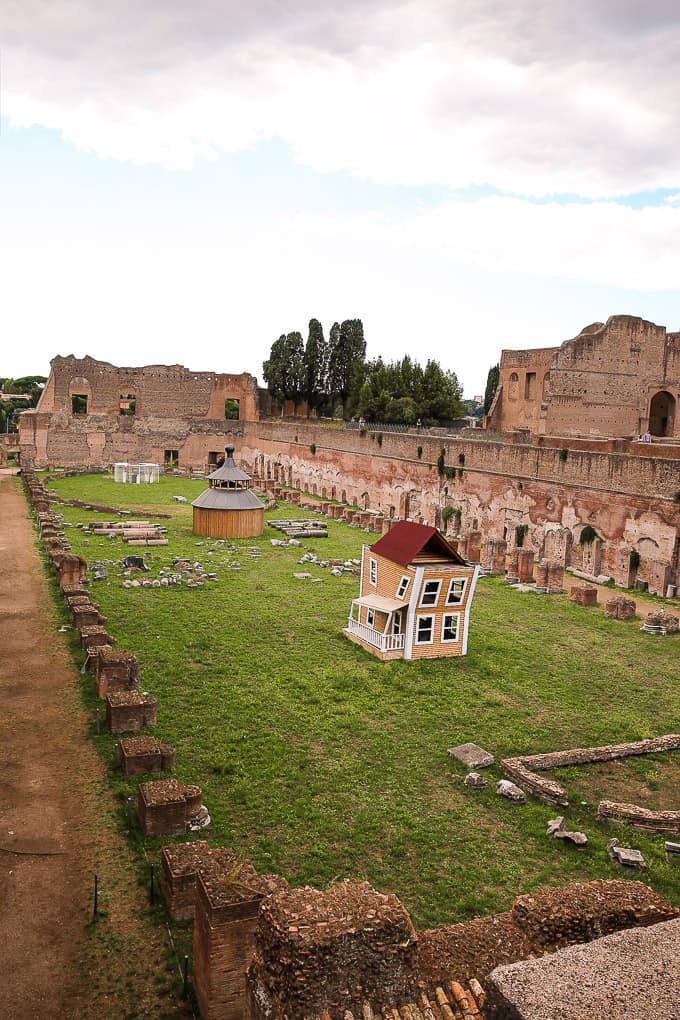
20. Water garden of the Domus Augustana on the Palatine Hill
The Domus Augustana is part of the Palace of Domitian on the Palatine Hill in Rome, Italy. The Palace of Domitian, located at the top of the Palatine Hill, was built as an imperial palace for Roman Emperor Domitian.
The Domus Augustana features an impressive and well-preserved water garden.
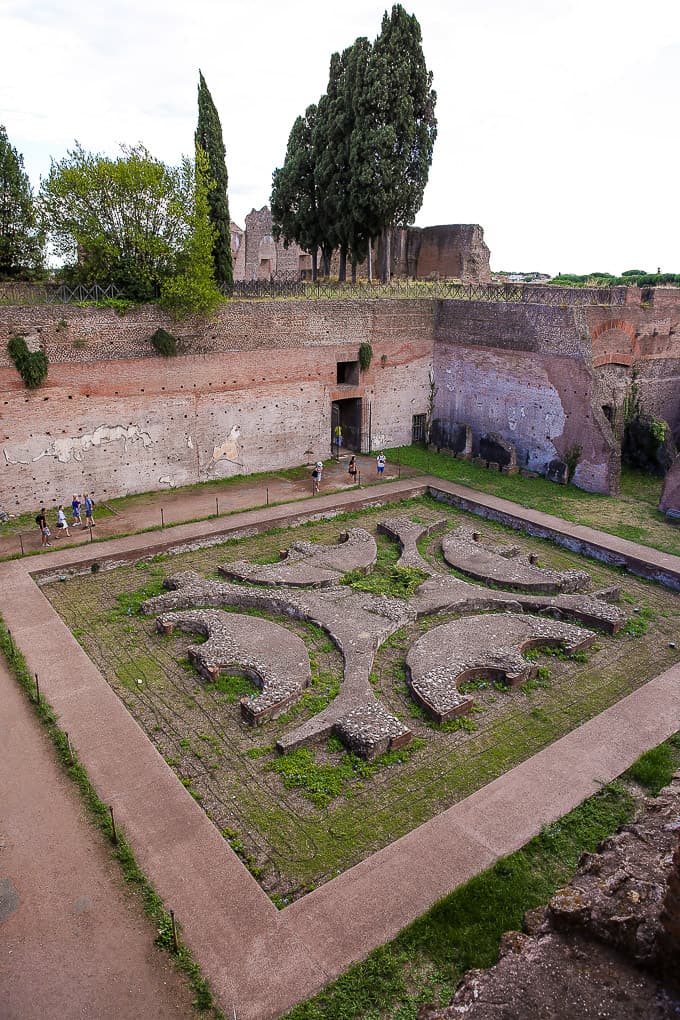
21. Temple of Venus and Roma
Temple of Venus and Roma is situated on the Velian Hill in Rome. The temple was built in 135 AD. It’s dedicated to the goddesses Venus Felix and Roma Aeterna.
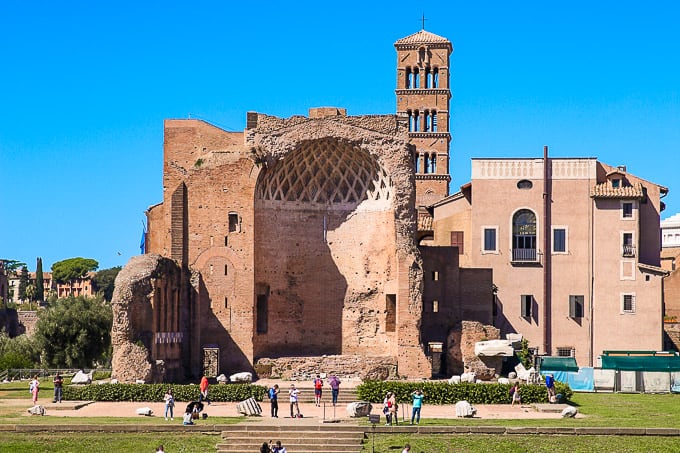
22. Trajan’s Market
It is estimated that the Trajan’s market was originally constructed around 100 AD. The market was built by a Syrian-Greek architect Apollodorus of Damascus on the order of the Roman emperor Trajan.
During the Middle Ages, the market had undergone major changes, and more floor levels were added. Trajan’s market is believed to be the world’s oldest shopping mall.
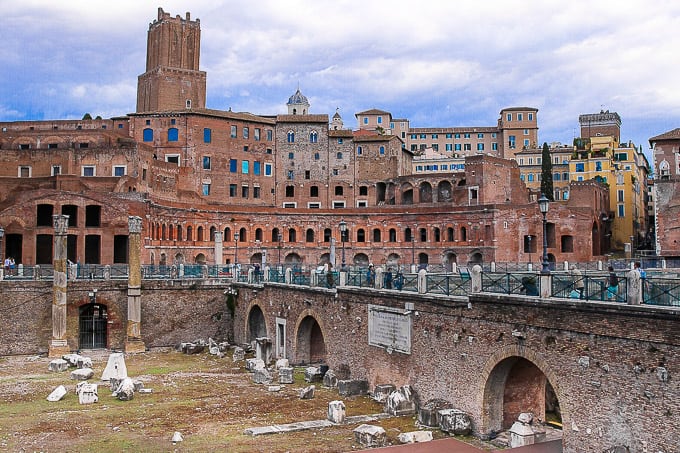
23. Trajan’s Forum
The Trajan’s forum was built around 100 AD at the direction of the Roman Emperor Trajan. The forum was designed by a Syrian-Greek architect Apollodorus of Damascus.
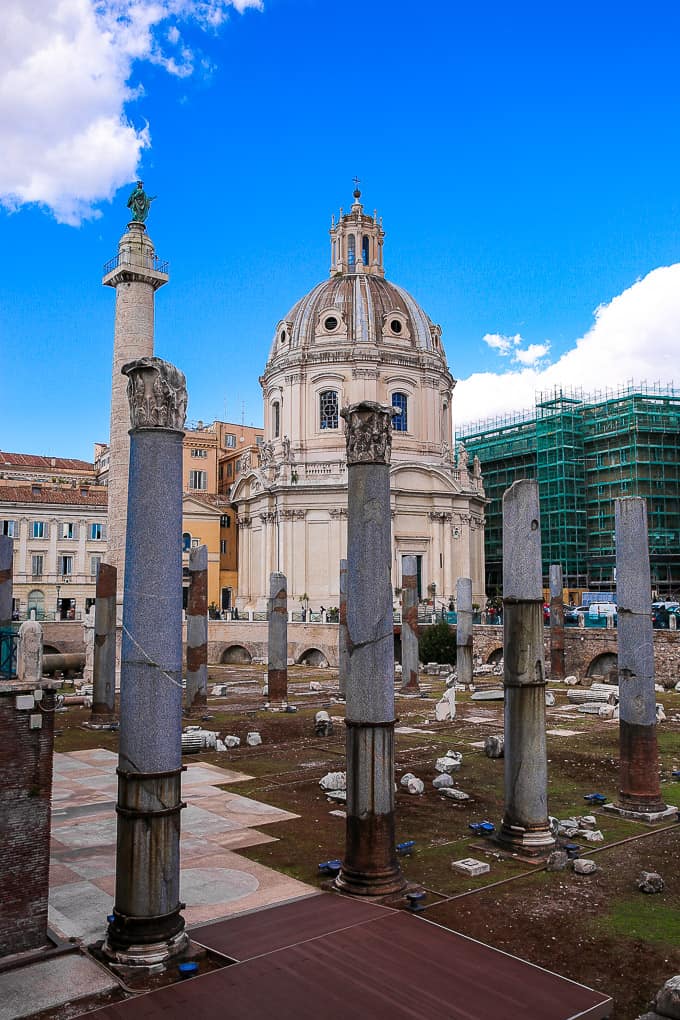
24. The Church of Santi Luca e Martina
The church of Santi Luca e Martina Church is located between the Roman Forum and the Forum of Caesar in Rome, Italy. The church dates back to the 7th century. You can see this spectacular church from the Roman Forum.
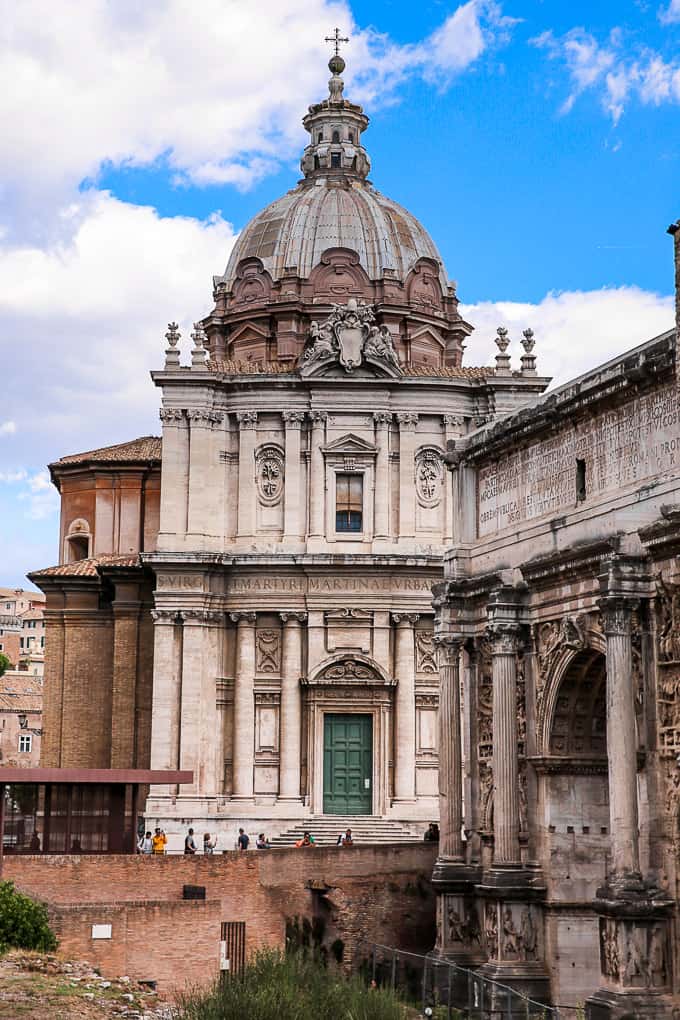
25. The Church of Santa Francesca Romana
The Church of Santa Francesca Romana is the church in Rome located next to the Roman Forum. The church dates back to the 10th century.
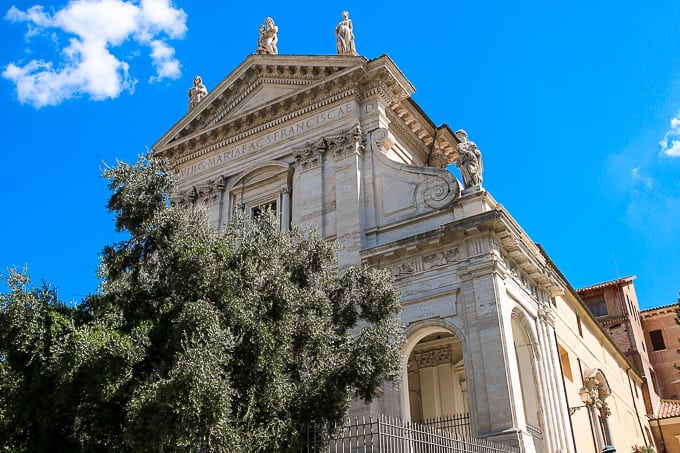
26. St. Peter’s Basilica
St. Peter’s Basilica is a Catholic church located in Vatican City, west of the Tiber River. The church was designed by several architects of Italian Renaissance, including Michelangelo. The dome of St. Peter’s Basilica is visible from many points in Rome.
27. Vatican Museums
The Vatican Museums are world famous for their vast collection of art, sculptures, and Renaissance masterpieces collected by Popes through the hundreds of years. There are more than 50 galleries, including the most famous, the Sistine Chapel.
28. The Sistine Chapel
The Sistine Chapel is located in the Apostolic Palace in Vatican City. The Sistine Chapel ceiling was painted by Michelangelo and is one of the most recognizable masterpieces of the Renaissance. The chapel also houses The Last Judgement, a fresco (occupying a whole altar wall) by Michelangelo.
29. Castel Sant’Angelo
Castel Sant’Angelo is also known as Mausoleum of Hadrian. It’s located in Parco Adriano, a park east of the Vatican, on the bank of the Tiber river.
Through the years, Castel Sant’Angelo served as a mausoleum for Roman Emperor Hadrian and his family. Then, starting in the 14th century, Castel Sant’Angelo was used as a fortress and a castle by the popes. The castle currently houses a museum, the Museo Nazionale di Castel Sant’Angelo.
30. St. Peter’s Square
St. Peter’s Square is located right in front of the St. Peter’s Basilica in Vatican City in Rome. The center of the square is decorated with an Egyptian obelisk (a tall tapering monument ending with a pyramid shape on top).
The post 30 Best Things To Do in Rome: Ancient Ruins, Temples, Arches, Fountains, and More! appeared first on Julia's Album.
from Julia's Album http://bit.ly/2wgBIbu
via IFTTT
0 comments:
Post a Comment